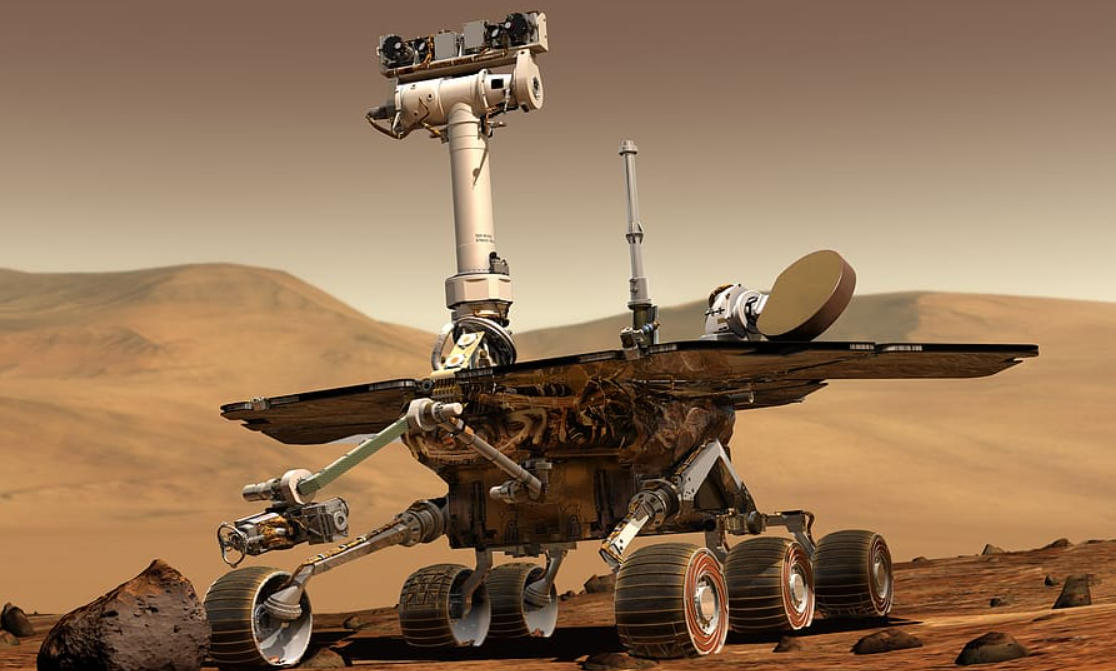Images of the Zhurong mission to Mars reach Earth. The Mars rover has already taken a selfie. The landing platform can also be seen. When the Chinese Mars rover Zhurong landed successfully as the nation’s first mobile Mars exploration vehicle in May 2021, the first images of the red planet were already being shared. The Chinese space agency CNSA has now received additional high-resolution images from Mars. These include recordings of the landing platform with which the rover landed and self-recordings with a manually positioned selfie camera.
The camera positioned Zhurong on the Martian soil 10 meters from the landing site. This was placed on the underside of the vehicle especially for this purpose. It was then navigated in such a way that it fits into the picture together with the platform. The large solar panels that supply the rover with energy are also clearly visible there.
Another photo shows Zhurong’s landing platform. This had extended a long bridge for the rover so that it could roll shallowly onto the Martian floor. The platform prominently bears the national flag of China. The black scorch in the background was caused by the rocket engines with which the vehicle landed on Mars.
Mars mission with no return
With the integrated navigation camera, the rover was also able to take a first-person snapshot of the brown-red stone desert of Mars. In addition, a 360-degree panorama was created by combining several images.
Zhurong’s landing platform drains excess fuel to prevent an explosion. Like all other Mars missions to date, the system is not designed to return to Earth.
However, a mission is planned in which rock samples from Mars are to be sent back. In preparation, the NASA Mars rover Perseverance collects suitable material and packs it in containers. Later, a vehicle designed by ESA will land on Mars, collect the containers and use small rockets to transport them back to the mother ship, which is in orbit. This should then fly back towards Earth and shoot the samples back to us from Earth orbit. It will take a few years until then.
